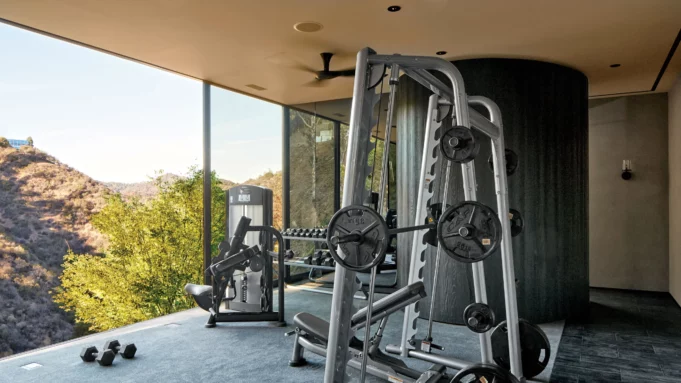Like many individuals, you may find peace at home. However, this oasis of calm can become a source of tension within your home if it needs to be adequately planned with your health and happiness in mind. That’s why we made this helpful article about making your house a wellness haven and everything you’ll need to get started.
Consult a healthcare expert
To begin, speaking with a medical practitioner who can advise you on appropriate home furnishings and lighting is essential. If anyone in your family suffers from allergies or sensitivities, discussing the potential impacts of a room’s design with them individually is necessary.
For instance, if one member of the household suffers from eye strain when exposed to bright lights (like fluorescent bulbs), it’s not only prudent for them to avoid those rooms but also to think about installing dimmer switches throughout the house so that everyone can adjust the light level as needed (even if this means forgoing some efficiency savings during peak hours)!
Create a space that’s calming.
A study from the Journal of Environmental Psychology found that people exposed to calming colors were likelier to experience less anxiety. The study also found that those who experienced anxiety tended to be more likely to engage in health-promoting behaviors such as exercise and eating healthier meals, so using calming colors can reinforce good habits!
Incorporate natural elements
Using all-natural building supplies is a simple and effective method for creating a more wholesome home environment. This will not only help you unwind, but it may also be beneficial to the world. As an illustration, having a few low-maintenance houseplants (like succulents) can help you save money on your electric bill and reduce energy usage.
Create a Home Gym or Exercise Area
According to West Medical experts, one effective way to promote weight loss and improve overall health is to incorporate an exercise area into your home design. Whether it’s a dedicated home gym or a designated space for yoga or other activities, having a convenient and comfortable space to work out can make it easier to stick to a regular exercise routine. Consider adding fitness equipment such as weights, resistance bands, or a treadmill to your home gym or incorporating a yoga mat, exercise ball, or other tools into your designated exercise area. Consulting with a healthcare expert can also help you choose the best exercises to incorporate into your routine for optimal results.
Use plants in your home.
Plants offer many benefits beyond just making spaces look beautiful—they produce oxygen and help purify water sources through their roots. They also help regulate humidity levels within buildings so that mold doesn’t grow on surfaces without enough moisture for mold spores’ survival (such as bathroom walls).
Choose calming colors
The colors you select for your health sanctuary should be soothing and not too bold. A too-vibrant color scheme can be stressful and make it hard to unwind. Choose bright hues of green, blue, and yellow (the three primary colors found in nature) and supplement with pastels like pink or lavender from the Pantone Color Chart to sidestep this issue.
Introduce natural light
The sun’s rays aren’t the only source of natural light; windows aren’t the only places to soak them up. In fact, the average person spends up to one hour daily staring at artificial light sources: Artificial lighting includes things like streetlamps and billboards. The benefits of exposure to natural light include better sleep, less stress, and a more positive disposition.
When designing a space to encourage health and well-being, lighting is crucial: The circadian rhythms that keep us feeling alert throughout the day are primarily the result of exposure to natural sunshine, while the suppression of melatonin (the hormone responsible for helping us fall asleep) by artificial lighting at night makes it more challenging to have a pleasant night’s sleep.
Minimize clutter
Clutter can be a distraction, and it can cause stress. It’s easy to get distracted by the things you see in your home, but if you want to create a healthy environment for yourself and your family, then minimizing clutter is critical. Minimizing clutter will help with your mind-body connection because having too much stuff around makes us feel overwhelmed and stressed out—both of which are unhealthy!
Incorporate aromatherapy
Aromatherapy is a great way to turn your house into a relaxing retreat. Essential oils can be used in a wide variety of home fragrance products, including candles, diffusers, and scented strips that can be set out anywhere from the coffee table to the bedside table. The soothing aroma of freshly cut flowers can do the same. To take things even further, you can use an ultrasonic humidifier, which provides soft moisture without chemicals or dangerous compounds like benzene, to the air around your body and emits negative ions into the atmosphere (a chemical found in paints).
Incorporate Healthy Eating Habits
Creating a wellness oasis isn’t just about designing a space that promotes physical activity and relaxation. It’s also important to consider how your home environment can support healthy eating habits, which are crucial for maintaining a healthy weight and overall well-being. Consider incorporating a well-equipped kitchen with plenty of storage space for healthy food options, a dining area encouraging mindful eating, and a herb garden for fresh ingredients. Consider consulting with a nutritionist or healthcare expert to discuss weight loss options and get advice on incorporating healthy eating habits into your lifestyle.
Consider air filtration
Air filtration is an essential aspect of creating a wellness oasis. Air filters can improve indoor air quality and help you breathe easier, but be sure to replace your filter regularly. Not all air filters are created equal; some will remove more pollutants than others, so choose wisely based on what type of pollutants are present in your home and how often you want to clean the filters (you may want to replace them every few months). If you’re unsure if one type of filter is better for your needs, ask an expert at a local hardware store or online retailers such as Amazon or Home Depot—they’ll have plenty of options available!
Final Thoughts
It can be hard to get everything you want out of a home, but if you’re looking for a healthy and relaxing environment, we hope these tips will help you make it happen.












